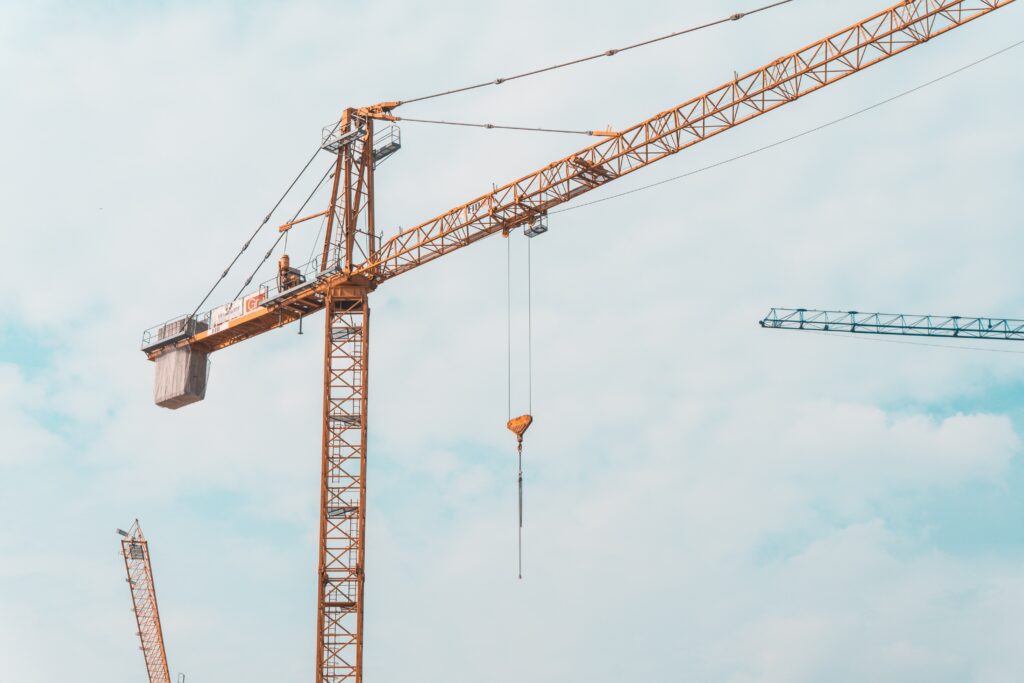
News
Cranes
The challenges of transporting a crane long distances across Canada
November 7, 2023 By Chris Ward
 Photo courtesy of Guillaume TECHER.
Photo courtesy of Guillaume TECHER. The transportation industry is expected to grow substantially in Canada by 2030, and heavy equipment hauling will account for a big portion of it. But some construction and industrial machines are more challenging to transport. Cranes are in this category.
Learning how to transport a crane safely, especially over long distances, is essential. Why? Finding the right crane for a job a few miles away from the work site is not always possible. Some projects need specialty cranes, multiple cranes, etc. In other cases, the budget may limit companies to specific crane manufacturers and so on.
Therefore, transporting a crane over long distances across Canada is standard practice. Thus, here’s an overview of how the process works.
Crane Transportation 101
Cranes are generally massive and sometimes, in the case of tower cranes, extend a few hundred feet. That makes them among the most challenging construction equipment to store, transport, and operate. But since they’re indispensable in many cases, the design takes into account potential logistics problems.
If a crane is too big to fit on a trailer, it can be taken apart and shipped by components. Once it reaches the job site, the cranes are reassembled and put to work. In the case of tall tower cranes, construction workers may need other cranes to rebuild them.
Fortunately, smaller cranes or telescopic cranes are easier to move from point A to B. In many situations, telescopic crawler cranes are big enough to complete the job. However, that doesn’t take anything away from tower cranes that can significantly boost productivity and speed up job completion.
But no matter what crane you need for a job, the transportation process typically involves the same steps.
- Find a reputable heavy equipment shipping company
- Discuss trailer options
- Disassemble the crane, if necessary
- Get a quote
- Schedule the pickup and delivery
Why You Need a Specialized Heavy Equipment Hauler
Transporting heavy equipment and machinery like cranes involves complex logistics. Like all other countries, Canada has strict transportation rules that shippers must follow. For example, certain roads have weight limits. Others might have specific height limits, cargo width restrictions, etc.
In addition, unlike transporting furniture or cars, moving heavy equipment requires special permits. Permits can take a long time to acquire without experience and connections in the industry.
Veteran heavy equipment shippers know the ins and outs of the transportation industry and how to ensure the crane reaches its destination on time and undamaged. You can find some good examples of why it can also be expensive to ship a crane across long distances here:
https://www.a1autotransport.com/shipping-a-crane/.
Perhaps even more critically, experienced shippers understand the requirements of practical transportation. Not every crane operator or owner knows the best way to transport a crane. On the other hand, heavy equipment haulers deal consistently with various crane types.
That means they know when it’s possible to ship them assembled and when it’s not. They can also suggest the best trailer options for a speedy and safe shipping process depending on the crane, distance, destination, etc.
Moving Cranes – Your Trailer Options
Heavy equipment haulers use many types of trailers to move cranes between worksites. It all depends on the size and weight of the crane and whether it’s fit for transporting fully assembled.
Flatbed trailers are often used to haul heavy equipment. Their weight limit of 48,000 pounds might not always support direct crane transportation, but it can be enough to carry disassembled crane components over long distances.
Double-deck trailers can carry longer pieces of equipment, up to 65 feet. Another option is a lowboy trailer. This type of trailer has two deck heights and can accommodate taller components.
Unless a crane is small enough to be transported as a whole, the shipper may need to utilize multiple trailers and drivers to relocate a trailer. That’s another reason it’s important to work with experienced crane haulers.
Shipping companies that specialize in moving heavy construction and industrial equipment have entire trailer fleets at their disposal.
How Shippers Calculate Crane Transportation Costs
Three primary factors affect shipping costs: dimensions (size), weight, and distance. Size and dimensions dictate much of the logistics of the job. For instance, the bigger the crane, the more difficult it is to load and unload.
The dimensions may call for using multiple trailers, professional disassembly, or even getting oversized load permits. Weight is always a determining factor in shipping costs, whether you send documents via courier or cranes across the country with a heavy equipment hauler.
Again, the weight dictates specific transportation requirements like permits, loading equipment, trailer types, driving speeds, etc.
A crane’s size and weight are indicative of the job’s complexity. Bigger cranes may need special equipment and trained operators even for loading and unloading procedures. They could also need additional safety gear during transport, require experts to supervise the disassembly processes, etc.
Then there’s the distance. Calculating the distance is always interesting. Typically, long-distance shipping costs more. It’s especially true when transporting a crane across the country as opposed to two cities over. But the overall cost per mile is cheaper on long distances than short-haul transportation.
Asking for quote breakdowns and working closely with heavy equipment haulers are essential for understanding shipment distance calculations. It can help construction companies and contractors find the best source of heavy equipment rentals based on distance.
Naturally, there’s another consideration when it comes to shipping cranes, urgency. Transporting a crane on a short deadline may create logistics challenges for heavy equipment haulers. Therefore, paying a premium in those situations is often expected.
Conversely, scheduling shipments weeks or months in advance can help lower transportation costs.
Print this page